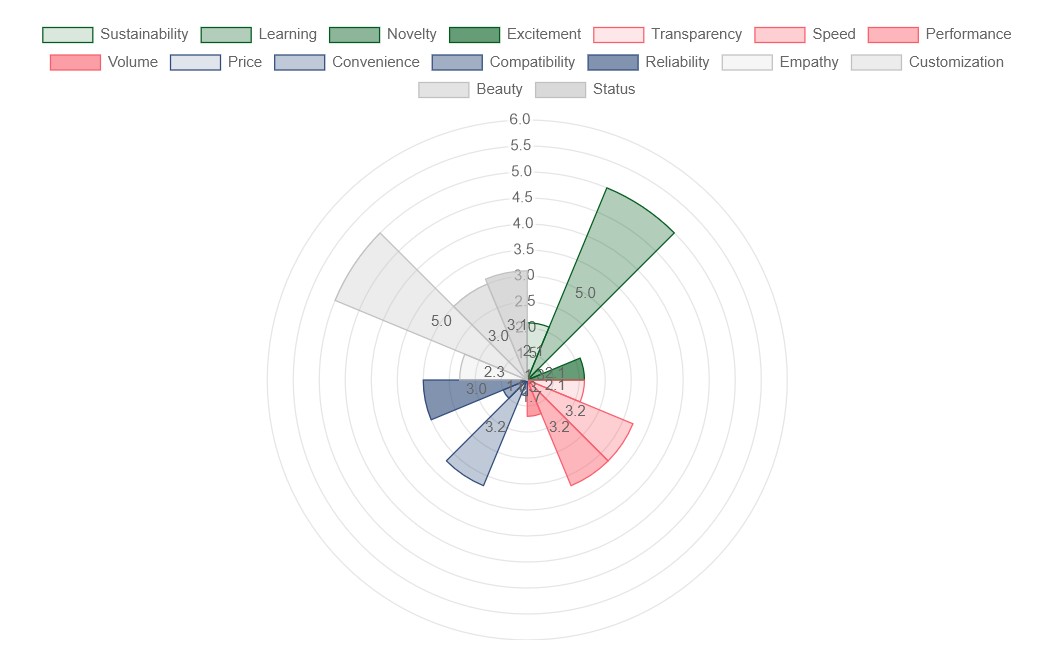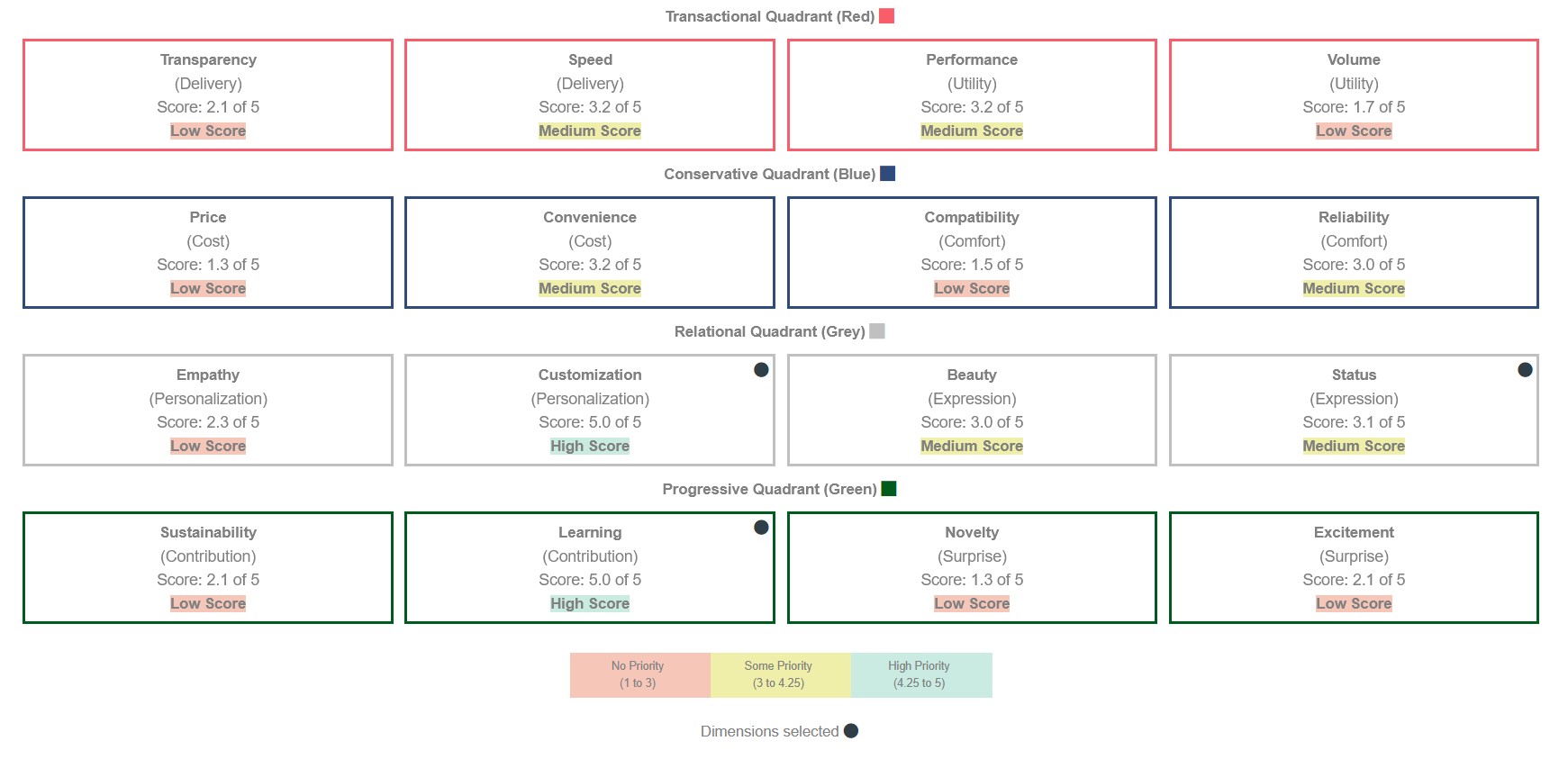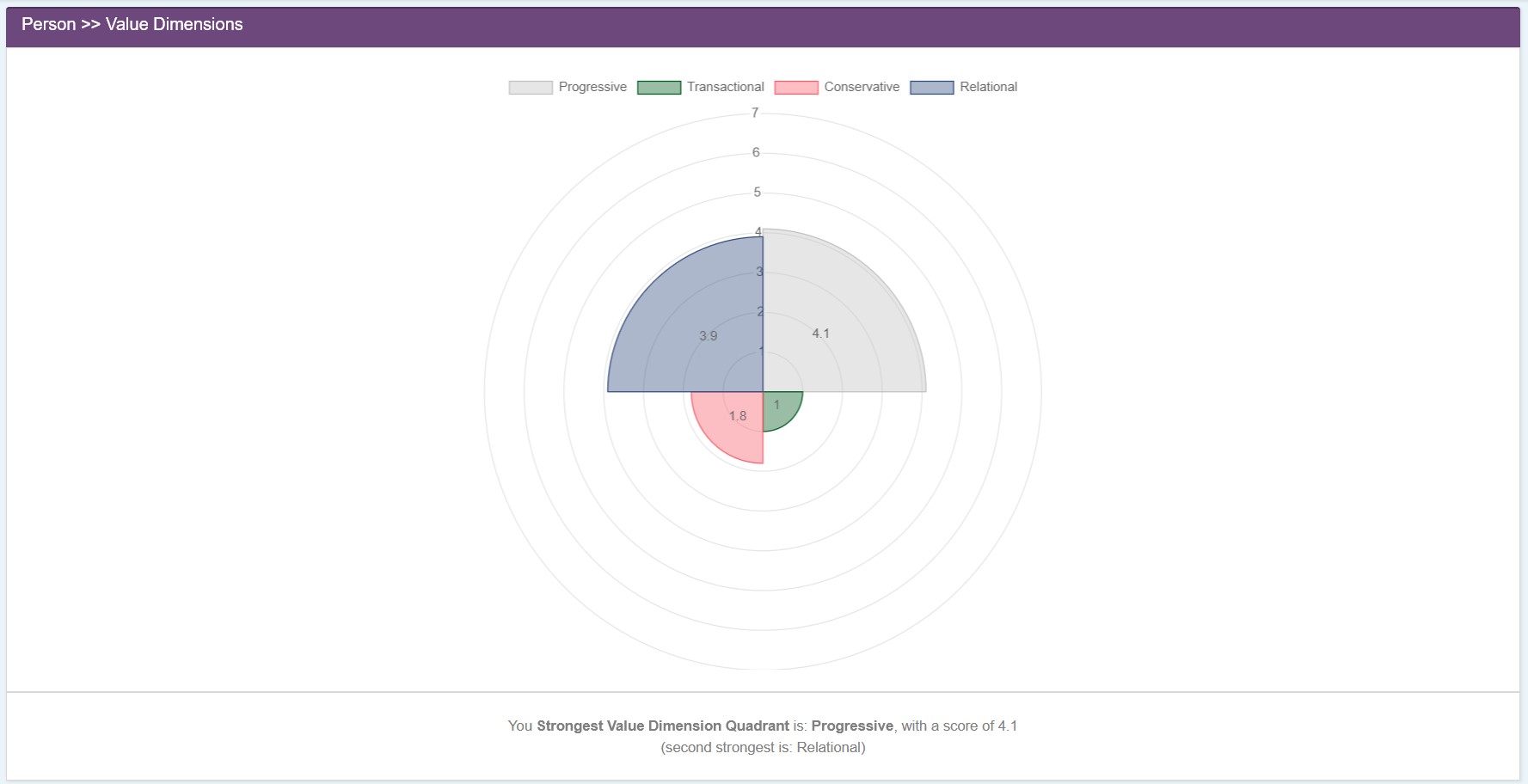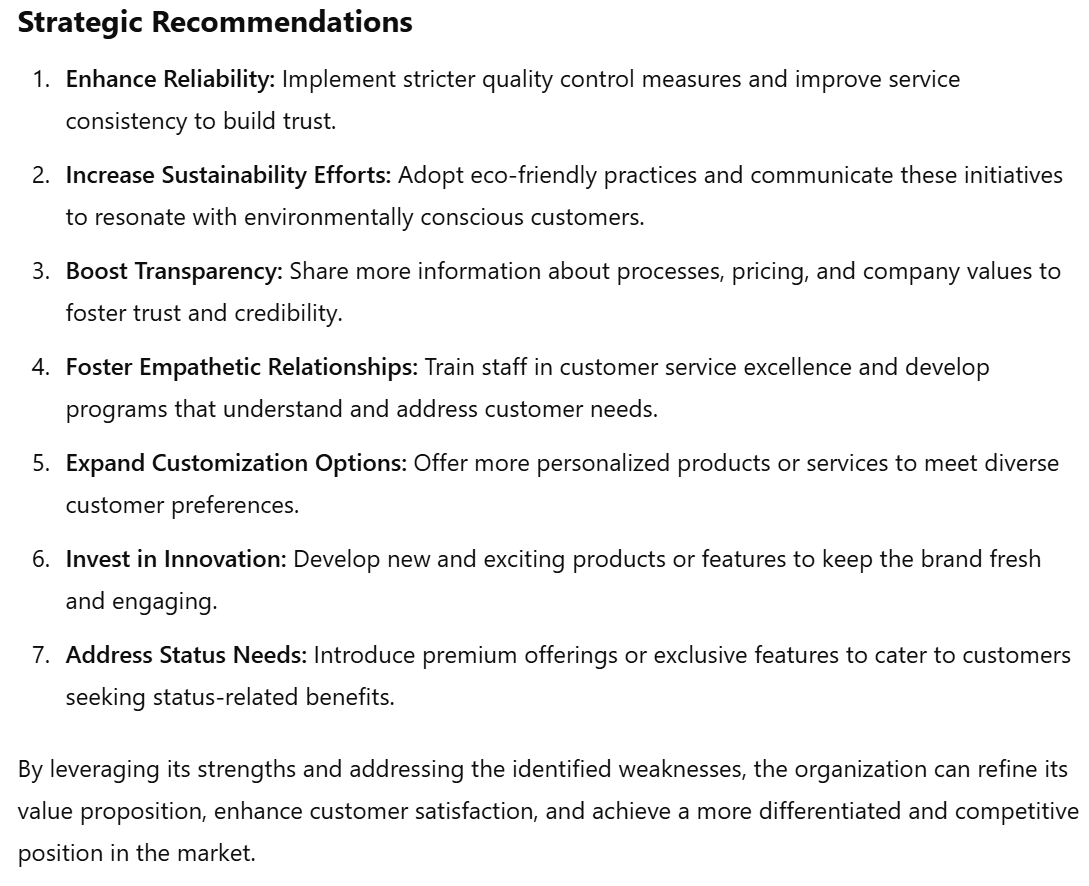16 Value Dimensions: Craft Your Distinctive Edge!
The Value Dimensions is a meticulously designed strategic positioning blueprint, geared to set you apart from the competition, creating unparalleled value for your clientele.
Do you want to see how this works in real life:
Start Now.
Create Account
1
All on One Platform
16
Ways outperform competition
3
Different viewpoints
2-3
Times current income potential
The 16 Value Dimensions is a tool-set that lets you decide how to best
differentiate yourself from the competition - how to identify and determine your
Unique Selling Points.
It facilitates a process where you will get both an
inside-out (own) and an outside-in (customer, competitor) viewpoint on your uniqueness and how these viewpoints potentially differentiate.
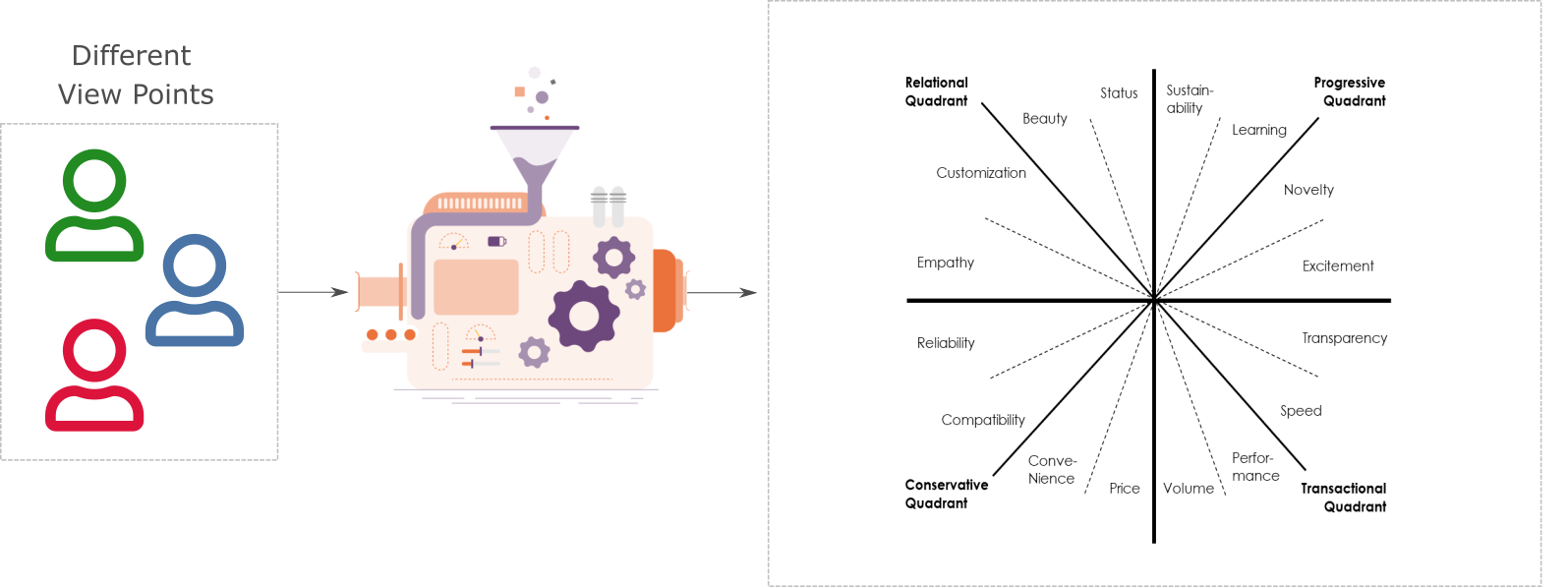
Why should you use Value Dimensions?
You will be able to Identify and Specify: Your company’s Unique Selling Profile. Your customer’s Unique Buying Profile. Your competitor’s Unique Selling Profiles.
This will allow you to Detect and Fix: Misalignments between what you offer and what customers need. Points of parity and weaknesses compared to the competition.
And with that you will be able to Define and Design: Products and services that meet and exceed customer expectations. Offerings that are distinct and stand out from the competition.
You also have the possibility to parse the product and/or home pages to check for allignment with selected value dimensions and generate a content and communications strategy.
The Process (How)
From an End-User Perspective, running a Value Dimensions analysis involve the activities as given in below User Journey.
(1) Create an Account (and user) by clicking on below button; payable service (or link to an existing account).
(2) Run Value Dimensions Survey from an Inside-Out perspective (own view).
(3) Invite a customer (and potentially a competitor) to run the same survey from an outside-in perspective.
(4) Analyse scores and do a side-by-side comparison of the different viewpoints.
(5) Identify and establish the need for change, develop a "close the gap" plan and initiate actions.
(Xtra) Parse web and identify potential missalignment and need for change to strategy.
Do you want to see how this works in real life: Create an Account Now.
Create Account
The TalEction platform also allows you to run Simulations where you can see how different user profiles (digital twins, individual level) match up with the different value dimensions.
This can then be used to design the optimum team of individuals to work on your product, depending on your unique Value Dimensions scores (Selling Points).
Why should you use the Value Dimensions? You move from unique selling point to unique selling profile (multiple dimensions and offerings).
Value Dimensions is more accurate then using an approach with operational excellence/customer intimacy/product leadership strategy.
You work more systematic, structured and quantitative instead of qualitative only.
Example Value Dimension Profiles for world known companies Apple, Lidl og Mckinsey.
 Apple
Apple
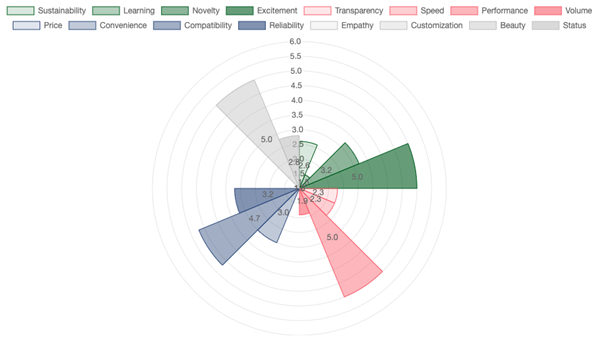
Apple is a good example of what we can call an "X-profile".
As the image shows, Apple performs well on one value dimension in each of the four quadrants, in this case Excitement, Performance, Convenience, and Beauty.
This combination indicates an effective balance between completeness (covering all four quadrants) and focus (1 value dimension per quadrant).
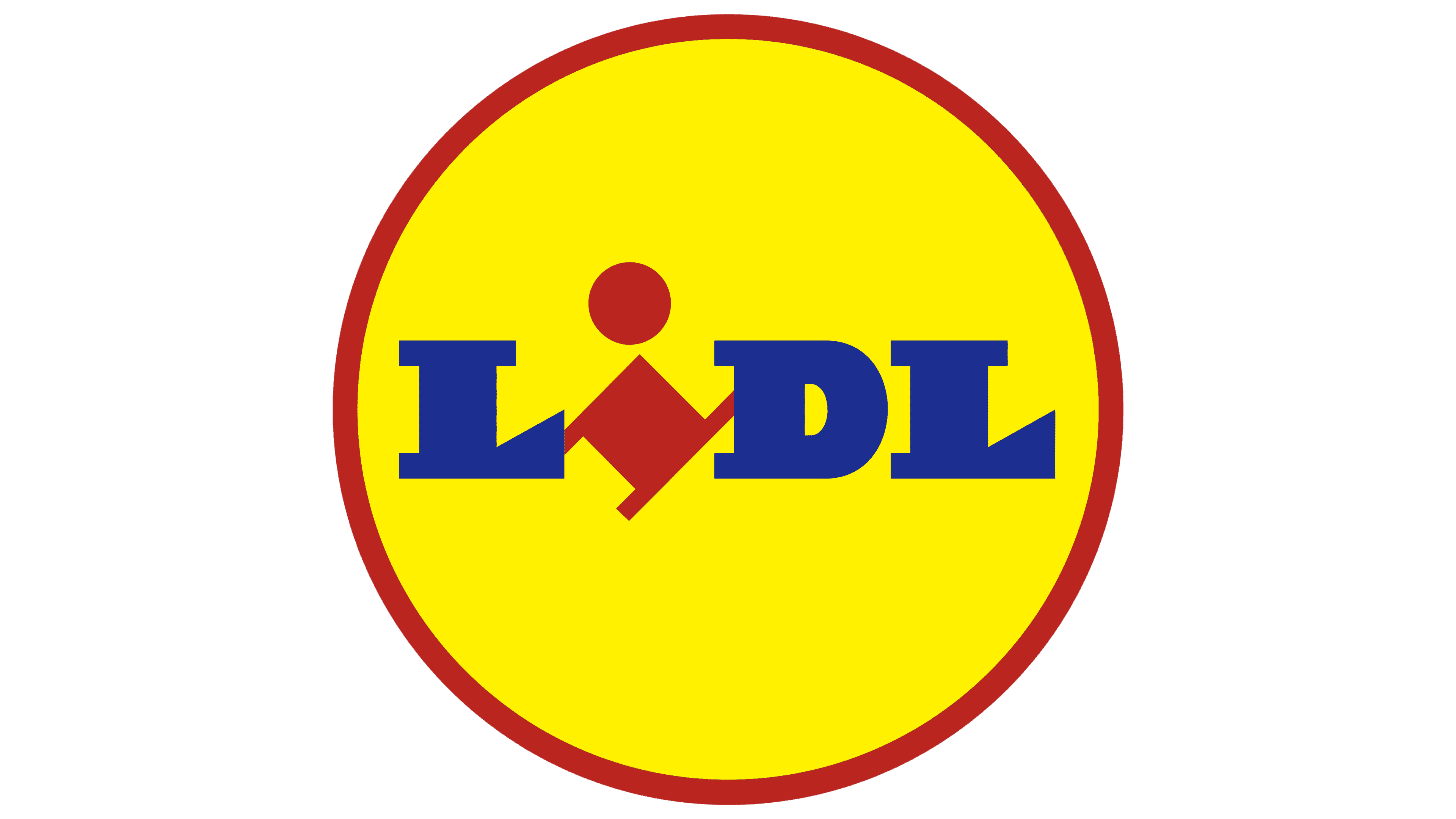 Lidl
Lidl
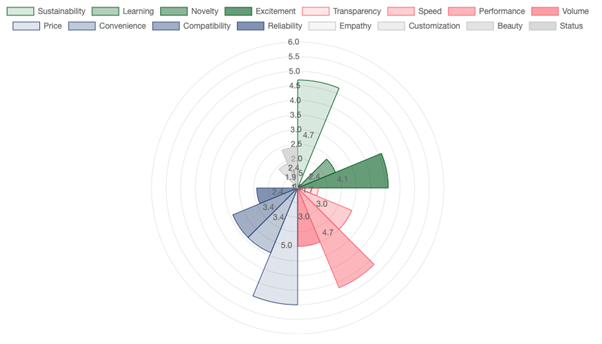
Lidl has an interesting profile, especially if we look at it historically.
In the early days, they focused on Price. As the picture shows, they still do.
But, year after year, they have expanded their value proposition by additional dimensions.
The first was Performance, and can be seen in the high quality of many of their products.
More recently, and still in progress, are Sustainability and Excitement.
The first through their products but also their buildings and efficiency, and the second through increasingly positioning their brand as a "uncool cool" brand.
 Mckinsey
Mckinsey
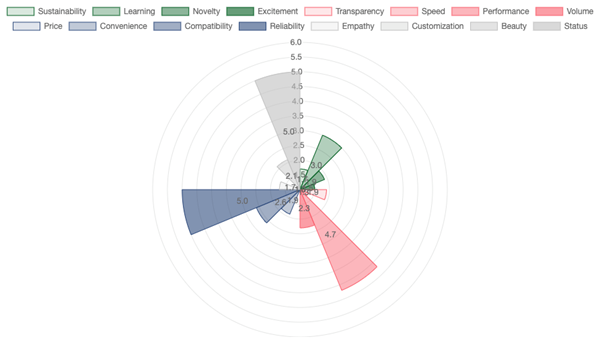
McKinsey’s profile shows outspoken choices with very high scores on some value dimensions and very low scores on others (such as Price).
Their value proposition is mostly a combination of Performance (high-quality work), Reliability (when you hire them you know what you get) and Status (as top-notch consulting firm).
The only real exception to the outspokenness of the profile as illustrated here is Learning.
On the one hand, working with them triggers learning and development in an organization; on the other hand, they are more results-oriented than development-oriented.
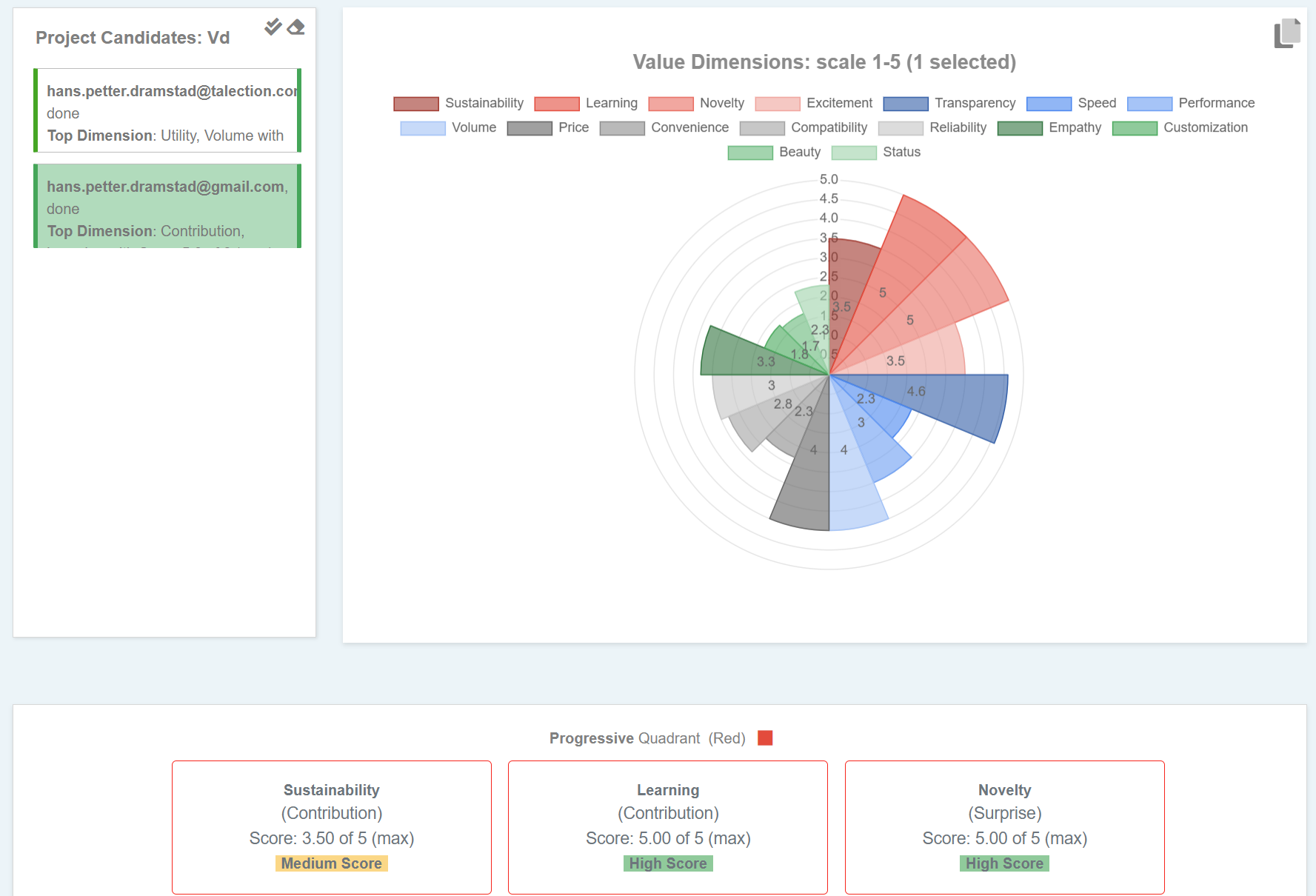

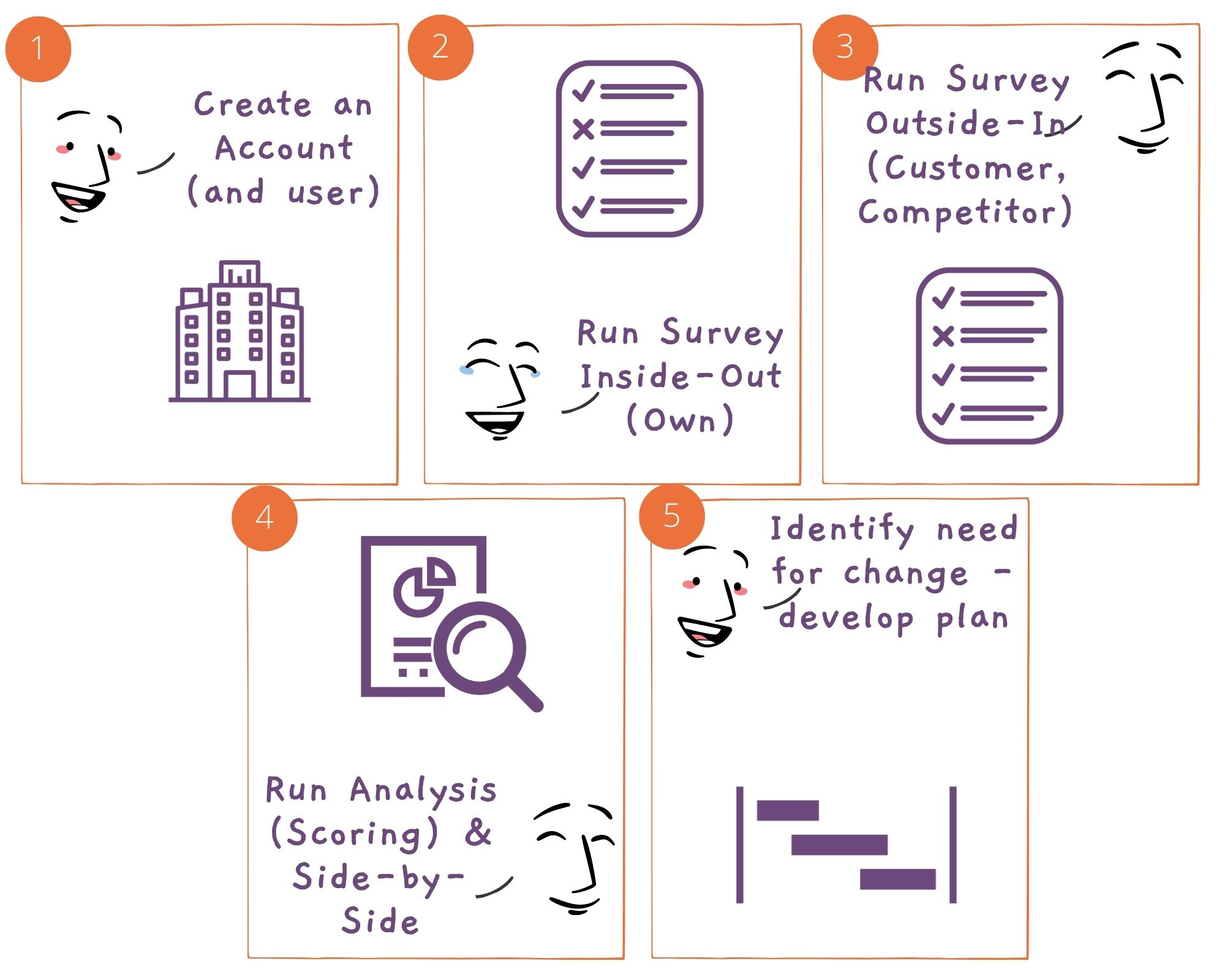
 Apple
Apple

 Lidl
Lidl

 Mckinsey
Mckinsey

